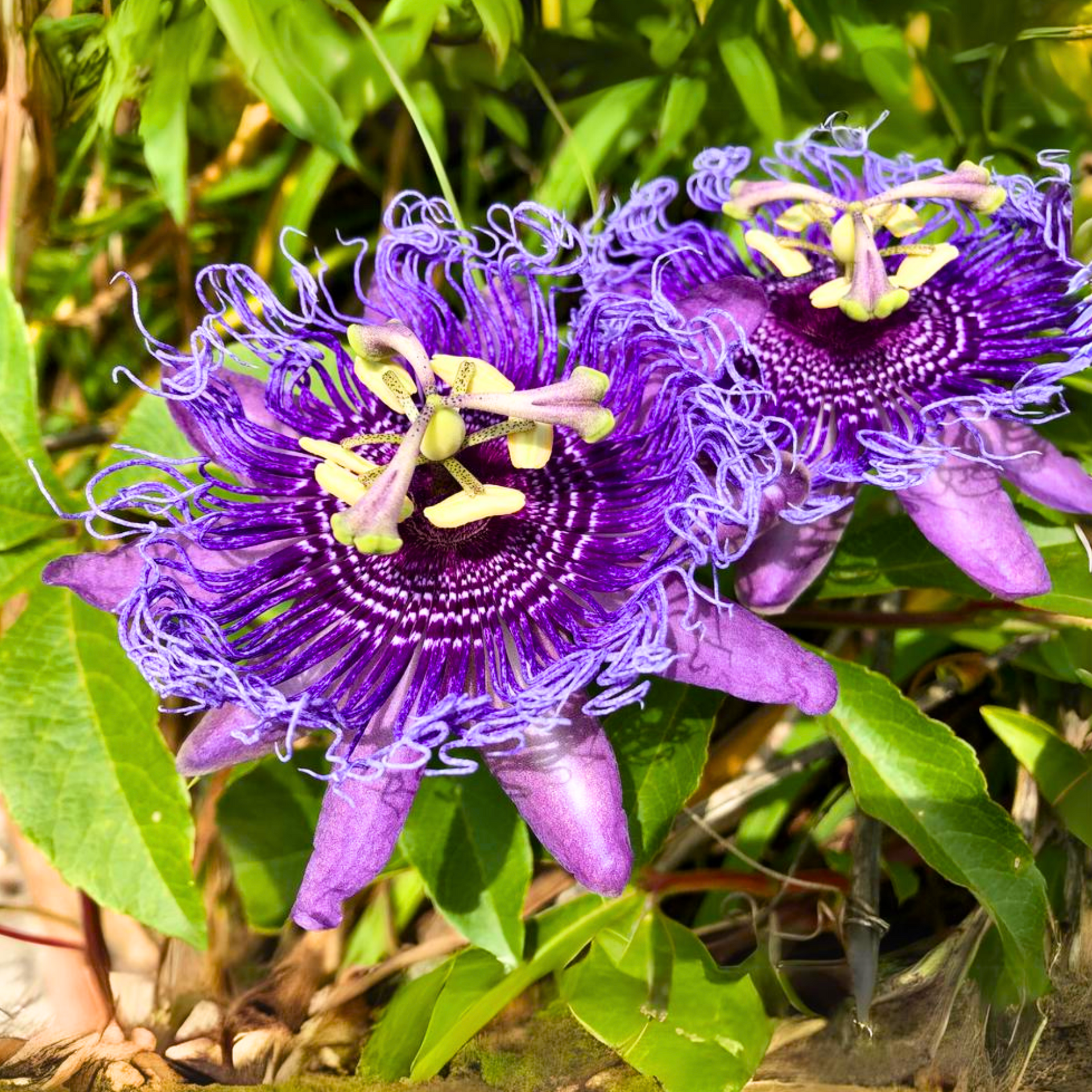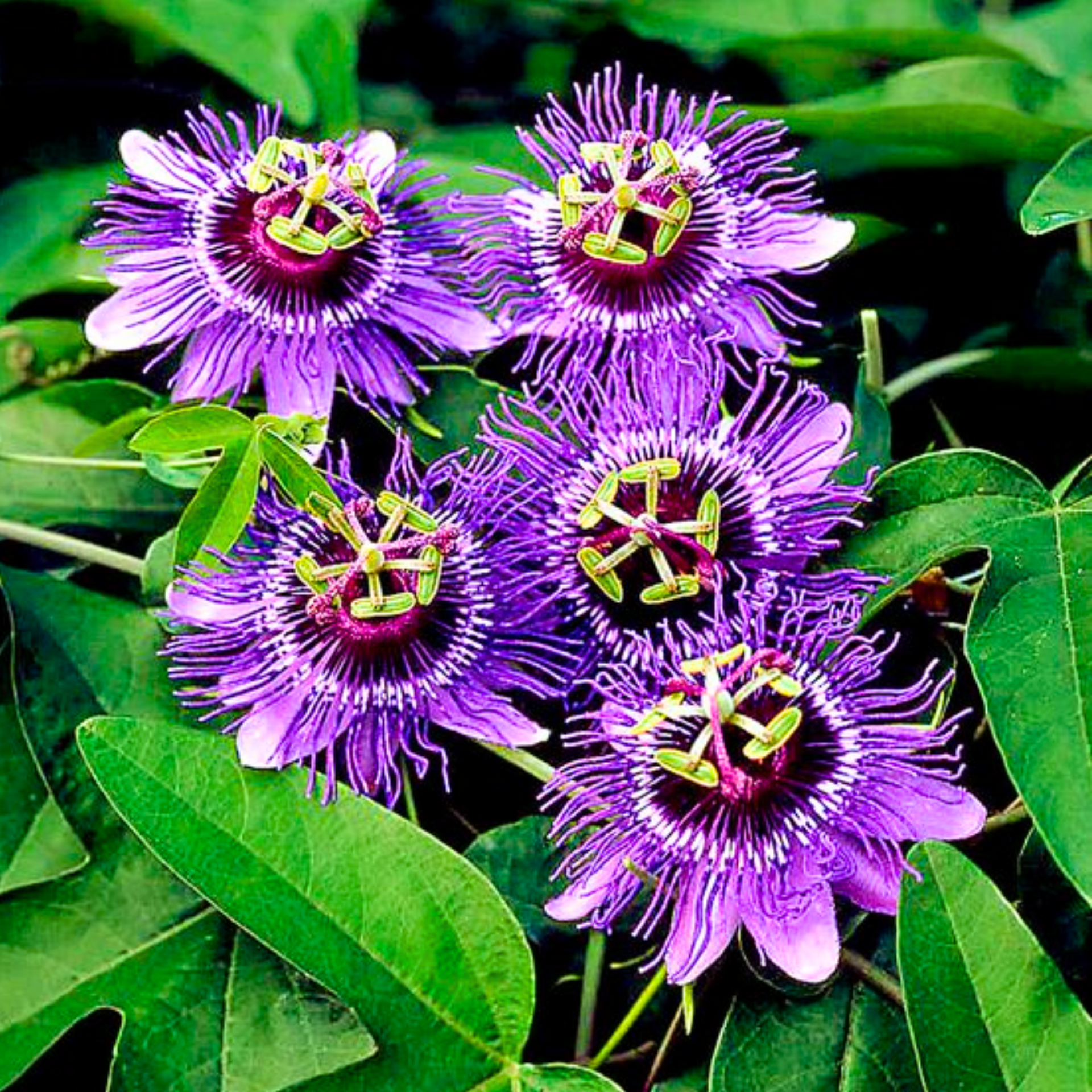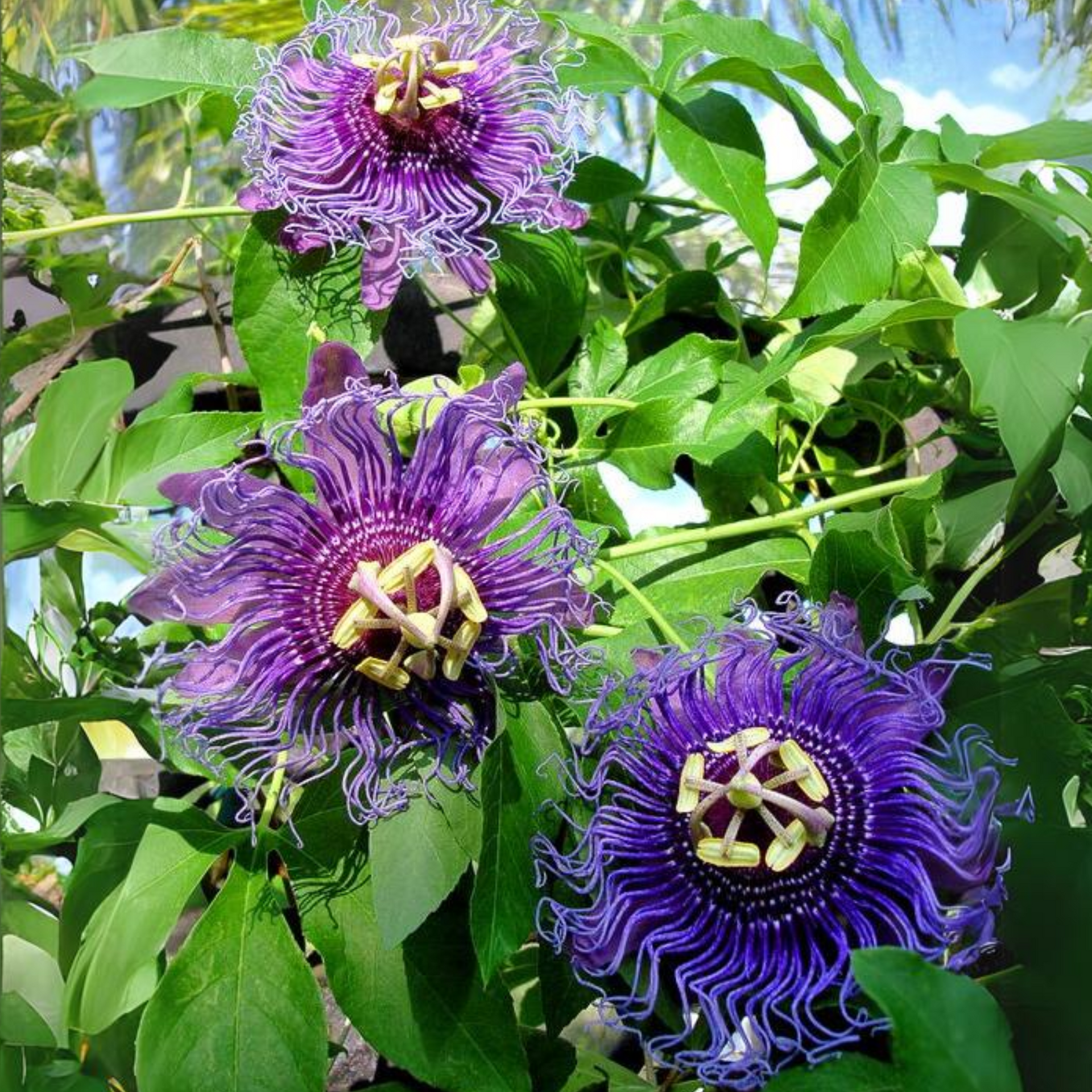


Green Paradise Offers Beautiful Passion Flower Plant
About Passion Flower Plant
The Passion Flower plant, scientifically known as Passiflora, is a beautiful flowering vine that belongs to the Passifloraceae family. It is native to tropical and subtropical regions of the Americas, including South America, Central America, and southern parts of North America.
Passion Flower plants are renowned for their exquisite and unique flowers. The flowers are large, colorful, and intricate, with a central disk surrounded by radial filaments and a crown of pointed petals. The colors of the flowers can vary widely, including shades of purple, blue, pink, white, and red. Some species also produce edible fruits known as passion fruits, which are often used in culinary preparations.
Apart from their aesthetic appeal, Passion Flower plants have a rich history of traditional medicinal use. The plants have been used by indigenous peoples for centuries to treat various ailments, including anxiety, insomnia, and pain. They are believed to possess sedative and anxiolytic properties, which have led to their use in herbal medicine and natural remedies.
Passion Flower plants are relatively easy to cultivate, making them popular among gardeners and horticulture enthusiasts. They thrive in well-draining soil and prefer a sunny location, although some species can tolerate partial shade. These vines are vigorous climbers and can reach significant heights, often requiring support structures such as trellises or fences for optimal growth.
Caring for Passion Flower plants typically involves regular watering, especially during dry periods, and providing adequate support for the vines to climb. Pruning is also recommended to control the plant's growth and encourage healthy development. These plants are generally hardy, but they can be susceptible to certain pests and diseases, including aphids, spider mites, and fungal infections. It's essential to monitor the plant's health and address any issues promptly.
Passion Flower plants are not only attractive and beneficial in the garden but can also attract pollinators such as bees and butterflies with their nectar-rich flowers. They are often used in landscaping to add a touch of tropical beauty and create natural boundaries or screens.
In summary, the Passion Flower plant is a striking vine with intricate flowers that come in various colors. It has a history of traditional medicinal use and is prized for its beauty and versatility in gardening and landscaping.
This Passion Flower Blue Live Plant is a great way to add vibrancy and lushness to your garden. It's an easy-to-maintain annual plant that adds bold blue/purple blooms to your outdoor space. Enjoy the vibrant hues and the sweet scent!
The Blue Passionflower, Blue Crown Passionflower, or common Passion Flower, is a species of Flowering plant native to South America. It has been introduced elsewhere. It is a vigorous, deciduous, or semi- Evergreen tendril vine growing to 10 m (33 ft) or more.
I have tried to grow passion flowers from seeds, and I have failed every time. I later found out that growing it this way is challenging indeed, not to say almost impossible! I then decided to grow from a cutting, and it was a game-changer.
I would recommend you do this too, especially if you already have another passion flower plant. Bear in mind that they will take over the available space, so keep an eye on it; otherwise, you will end up having a very long passion flower vine circulating all over your house.
Cut the already-established passion flower at the beginning of spring; this way, you will have plenty of time to help your new plant thrive.




